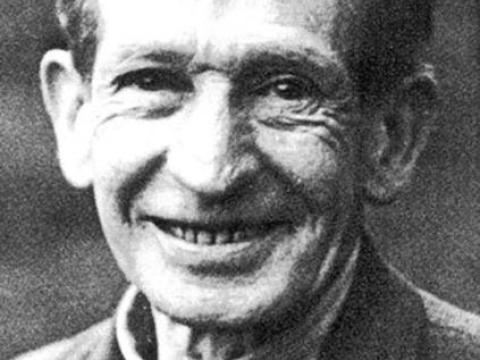A look at the radical history of Manette Street in London, whose buildings housed various elements of the socialist, anarchist and immigrant workers' movements from the late-nineteenth century to the mid-twentieth.
Manette Street has probably more long-term associations with anarchism –and radicalism in general-than any other street in Britain. Formerly known as Rose Street, it acquired its new name in 1895 after the fictional Doctor Manette who resides there in Charles’ Dickens The Tale of Two Cities. Off of the Charing Cross Road, one side of it is now taken up by the north facing façade of Foyles book store.
It was in 1878 that the Social Democratic Club moved to 6 Rose Street. The Social Democratic Club had five sections of different nationalities, which included the Communistiche Arbeiter Bildungs Verein (CABV), the remnant of the Communist League. The Club only occupied part of the premises, a tenement full of poor working class tenants. One of those who lived there was Charles Ruster who according to the 1881 Census was the steward of the Club. The CABV supported a masons strike from there, as well as sheltering German fugitives from Bismarck’s Anti-Socialist Laws. The veteran Frank Kitz recalled that: “The club was crowded with refugees: our hall at times resembled a railway station, with groups of men, women and children sitting disconsolately amidst piles of luggage”. Kitz, along with the German anarchist John Neve, was involved in the setting up of the Rose Street Club. The groups who came together to set up the Club had previously met at various pubs. Now they could avoid the interference of pub landlords and as Kitz wrote: “We were enabled to hold public meetings with greater frequency”. The Rose Street building had previously housed the St James and Soho Working Men’s Club, and was nearly derelict. Rebuilding and redecorating started in February 1878 and on 3rd August the Club was officially inaugurated for all sections of the Social Democratic Club/CABV.
Kitz, along with John Neve, Edwin Dunn and John Lord (treasurer of the Freiheit Defence Committee) and members of the Rose Street Club were delegates at the International Congress (Social Revolutionary and Anarchist) in July 1881. Edwin Dunn, who was also secretary of the Marylebone Radical Reform Association, was behind the initiative for an independent labour party alongside H. M. Hyndman. Meetings were held at Rose Street and elsewhere to discuss this subject and Dunn sent out invitations as secretary of the Marylebone Radical Association for a meeting in June 1881. This led to the foundation of the Democratic Federation, which later became the Social Democratic Federation in 1884. Dunn’s section was more advanced than the majority of the DF in 1881.
When the CABV split along the lines of those who supported Johann Most, on his way to becoming a full-fledged anarchist, and the orthodox Social Democrats, Rose Street housed the section that rallied behind Most, until it moved to St. Stephen’s Mews, Rathbone Place in 1885. Most’s paper Freiheit was published originally from Rose Street, moving to Percy Street in October 1879. In 1929 the building was demolished for the extension of Foyles bookshop.
At nearby Number 9, the anarchist Walter Ponder (known also as W.D. Ponder and Wal Ponder) together with a group of French anarchists organised for a large anti-militarist demonstration in 1913. This demonstration, supported by the North London Herald League, rallied at Trafalgar Square with feeder marches from Highbury Corner, St. Pancras Arches and several other venues. Ponder, a cabinet maker, had been active in the syndicalist Industrialist League before being expelled from it for pushing an explicitly anarchist line. Ponder was born in Shoreditch, in 1878 and was the son of George C and Mary A. Ponder. His father was also a cabinet maker. He deserves more research as he seems to have been active in setting up anarchist groups in Deptford and Woolwich as well as addressing meetings in Hackney and Islington, and was a member of the Glasgow Anarchist Group in 1914, attending the Liverpool Anarchist Conference in that yea . He had a reputation, according to George Cores, of being a terror to ‘Marxian Social-Democrats’. He spoke regularly for the North London Herald League up until 1920, his specialty being anti-militarism, as well as being the chair of the East London Workers Committee (ELWC) in 1918. In this period he spoke on anti-war platforms at Trafalgar Square alongside Sylvia Pankhurst, Guy Aldred and Tom Mann. Representing the ELWC he was one of those - with Melvina Walker, old militant of the WSF, Jack Tanner for the Amalgamated Society of Engineers etc - who formed a defence committee when state repression came down upon Pankhurst and her Workers Socialist Federation
Manette Street’s last associations with anarchism seem to have been with The London Anarchist Group which held outdoor meetings in Manette Street every Saturday evening during the 1950s. It had a team of “at least six outdoor speakers” including Philip Sansom. During the Suez and Hungary crises the LAG held a meeting there on 17th November 1956 that attracted a huge crowd, which prevented the police attempt to close it down. In fact it “virtually stopped the traffic in Charing Cross Road”. (Philip Sansom, Freedom, 1976).
Nick Heath





Comments
added a bit more info on…
added a bit more info on Walter Ponder.